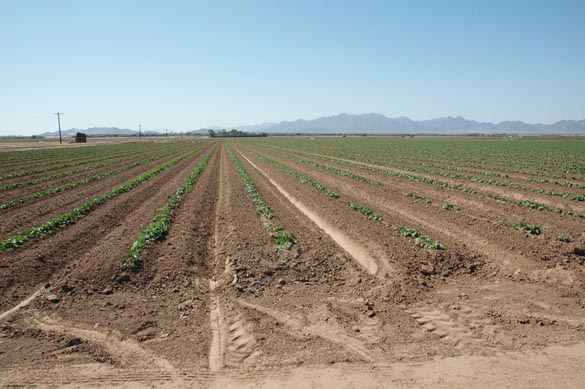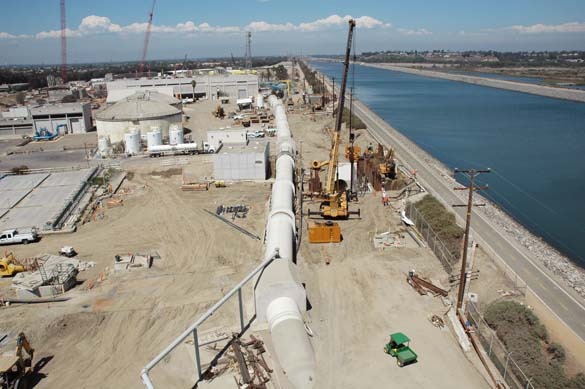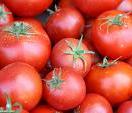|
CAN IT BE DONE? |
|
♦ Pristine rainwater ♦
Pristine rainwater has very little salt, typically less than 30 part per million;
yet surface runoff often has more than 300 parts per million.
Where does all this salt come from? As water moves through the land and soil, it picks up solids.
The solids are salt ions which are transported in solution. Streams and rivers perform the natural service of transporting the excess salts to the ocean.
Enter humans and their need for food and fiber. We have long learned to tap the fresh water of rivers, to divert it
to suitable fields, and to apply it to the land (Fig. 1).
Irrigation is a product of human ingenuity, entailing the return of surface water to the land.
In nature, a return of surface water to the land is the exception.
In the few cases where low-lying lands are flooded with surface runoff,
lack of drainage will usually result in increased salinity.
Nature intended surface runoff to carry the salts to the ocean.
By using up the water, irrigation results in the loss of the natural service of rivers.
To assure sustainability, this loss must be eventually compensated.

|
An interesting example of natural drainage service is provided by Lake Titicaca, in the high plains of southern Peru and northern Bolivia.
The water of Lake Titicaca is fresh, because the lake has an outlet, properly called the Desaguadero river (The Outlet river).
In turn, the Desaguadero river flows into Lake Poopó, which does not have an outlet, and is, therefore, saline.1
A fully endorheic system will always be saline; however, a small amount of drainage will avert salinization.
♦ Sustainable irrigation ♦
Irrigation always produces salts. The irrigation water itself carries salts, which are left behind
after crop evapotranspiration. In addition, irrigation is usually practiced on arid/semiarid lands,
which have new, salt-rich soils. The question has been posed: Is irrigation sustainable?2 Can irrigation be sustained indefinitely
in the presence of salt
accumulation?
The way to achieve sustainability
in irrigated agriculture is to implement a salt balance, with no net gain of salts. This entails drainage and proper treatment/disposal
of drainage waters, ideally to the oceans.
Five alternatives to ocean disposal have been considered: (1) river discharge, (2) water reuse, (3) water treatment,
(4) evaporation ponds, and (5) deep-well injection.
None of them is sustainable.
River discharge increases the salinity of surface waters, and the increase is cumulative in a downstream direction.
Reuse of drainage water may provide some temporary relief, but it does not get rid of the offending salts.
Drainage water treatment with reverse osmosis is attractive for high end-value users, but the brine byproduct requires proper disposal.
Evaporation ponds do not move the salt away, defying salt balance.
Deep well injection may compromise the quality of the groundwater, on or off-site.
The only way to assure irrigation sustainability and avoid surface-water contamination is ocean disposal.
Brine lines are a necessity in heavily impacted watersheds.
For example, the Santa Ana Watershed Project Authority (SAWPA) has a brine line
connected to an ocean outfall (Fig. 2).3
The Calleguas Municipal Water District, in Ventura County,
has completed in 2010 a brine line to the ocean.4
These examples show that the salt balance vision is achievable.
The only constraint is the physical distance to the ocean and the associated cost.

|
Fig. 2 Ocean outfall next to Santa Ana river, Huntington Beach, California.
♦ The San Joaquin valley ♦
Since 1968, for nearly 40 years now, water and salt have flowed to California's San Joaquin valley through one of the largest irrigation systems
ever built. The water has helped grow the fruits, vegetables, and fiber for which the valley is well known.
Throughout this time, due to environmental, regulatory and other constraints,
the salts have been left behind and they are continuing to accumulate, with no apparent end in sight.
The Central Valley Regional Water Quality Control Board has a recent report
entitled "Salinity in the Central Valley, an Overview," dated May 2006.5
The U.S. Bureau of Reclamation has a recent report entitled: "San Luis Drainage Feature Reevaluation: Record of Decision,"
dated March 2007.6
In light of these studies, can the state of California achieve
sustainable irrigation in the San Joaquin valley?

